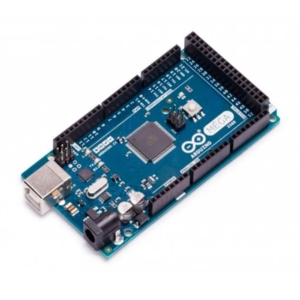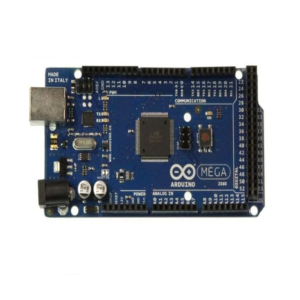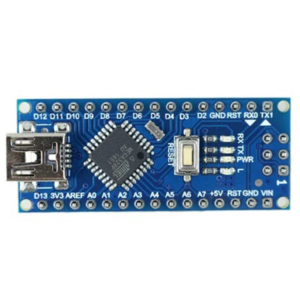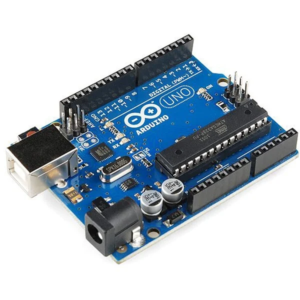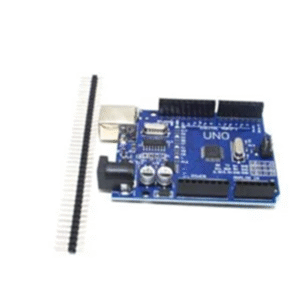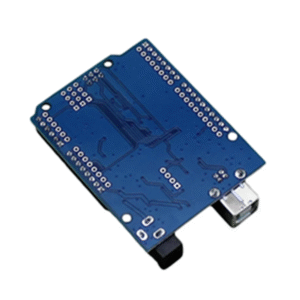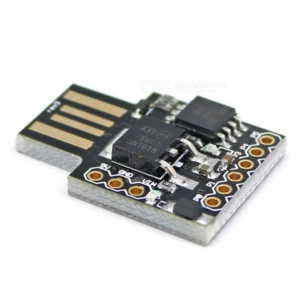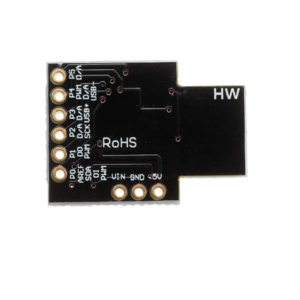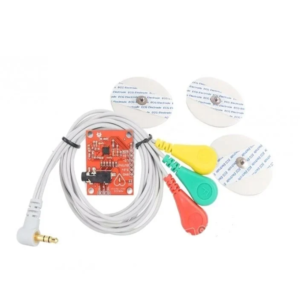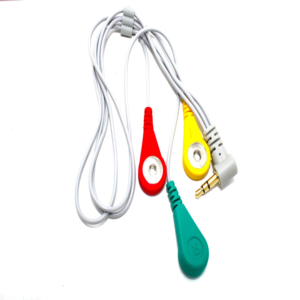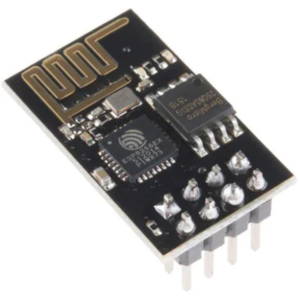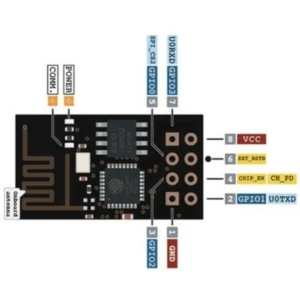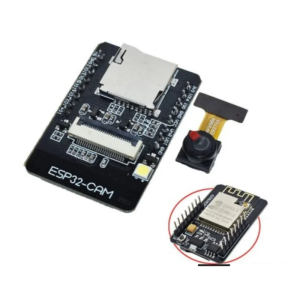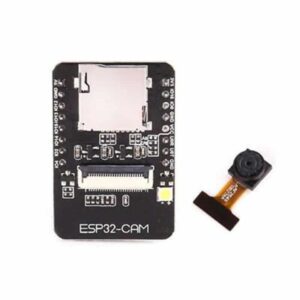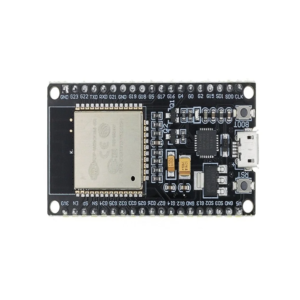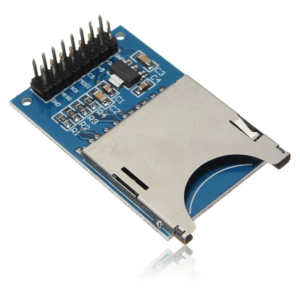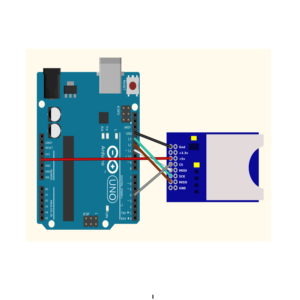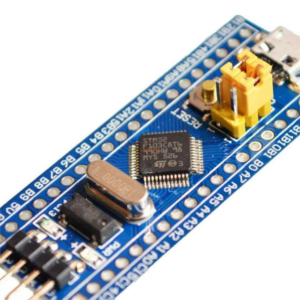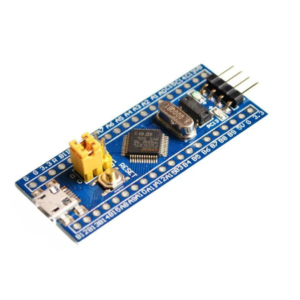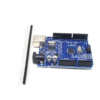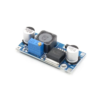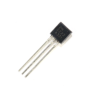Add to wishlist Compare Quick view
₹ 210QUICK OVERVIEW:
Resolution: 5 MP
Interface Type: CSI(Camera Serial Interface)
Dimensions: 25x23x8 (LxWxH) mm
Supported Video Formats: 1080p @ 30fps, 720p @ 60fps and 640x480p 60/90 video
Fully Compatible with Raspberry Pi 3 and 4 Model B
Plug-n-Play camera for Raspberry Pi 3 and 4 Model B.
Add to wishlist Compare Quick view
₹ 70Specifications
Parameter Details
Operating Voltage 5V
Interface 2.54mm pin leads
Potentiometer Resistance 10kΩ
Output Type Analog signals (X and Y axes)
Switch Built-in pressable switch
Compatibility Arduino, Raspberry Pi, and other microcontrollers
Add to wishlist Compare Quick view
₹ 1,600Technical Specifications
Specification Details
Microcontroller ATmega2560
Operating Voltage 5V
Input Voltage (Recommended) 7-12V
Input Voltage (Limits) 6-20V
Digital I/O Pins 54 (15 PWM)
Analog Input Pins 16
DC Current per I/O Pin 40mA
DC Current for 3.3V Pin 50mA
Flash Memory 256KB (8KB used by bootloader)
SRAM 8KB
EEPROM 4KB
Clock Speed 16 MHz
USB Host Chip MAX3421E
Dimensions (LxWxH) 101.98mm x 53.63mm x 15.29mm
Weight 35g
Add to wishlist Compare Quick view
₹ 250Specifications:
Operating Voltage (logic level): 5V
8 analog inputs ports: A0 ~ A7
14 Digital input / output ports: TX, RX, D2 ~ D13
1 pair of TTL level serial transceiver ports RX / TX
Using Atmel Atmega328P-AU MCU
There is a bootloader installed in it
Standard 0.1” spacing DIP (breadboard friendly).
Manual reset switch.
Add to wishlist Compare Quick view
₹ 480Specifications:
Microcontroller ATmega328 DIP – Interface CH340G
Operating Voltage: 5V
Input Voltage (recommended): 7-12V
Digital I / O Pins 14
PWM output PINS: 6
Analog Input Pins: 6
Add to wishlist Compare Quick view
₹ 280Specifications:
Microcontroller ATmega328 DIP – Interface CH340G
Operating Voltage: 5V
Input Voltage (recommended): 7-12V
Digital I / O Pins 14
PWM output PINS: 6
Analog Input Pins: 6
Add to wishlist Compare Quick view
₹ 390Specifications:
Specification Details
Microcontroller Type 8-bit ATmega328P
I/O Pins 23
Timers 3 (8-bit/16-bit)
Clock Frequency Up to 20 MHz
Program Memory 32KB Flash
RAM 2KB SRAM
EEPROM 1024 Bytes
Interfaces I2C, SPI, USART
Operating Voltage 2.7V – 5.5V
Temperature Range -24°C to 84°C
Dimensions (LxWxH) 34.8 x 7.5 x 4.57 mm
Package Type Through-Hole (DIP)
Add to wishlist Compare Quick view
₹ 250Specifications:
Microcontroller: ATtiny85Interface: USBDevelopment Environment: Arduino IDEI/O Pins: 6 (digital, analog, PWM configurable)PWM Outputs: 3 (expandable via software PWM)Analog Inputs: 4Communication: I2C, SPI (via USI)Power Supply: USB or 6V – 35V DCOnboard Regulator: 150mA, 5VSize: Ultra-compact for space-constrained projects
Add to wishlist Compare Quick view
₹ 690Specifications
Parameter Value
Operating Voltage 3.3V DC
Analog Output Yes
Temperature Range -40°C to 90°C
Cable Length 50 cm
Board Dimensions 36mm x 30mm x 18mm
Weight 5g
Connector Type 3.5mm Jack for ECG pads
Add to wishlist Compare Quick view
₹ 150Specifications
Wi-Fi Modes: Wi-Fi Direct (P2P), Soft-APProtocol Stack: Integrated TCP/IPProcessor: Low-power 32-bit CPUCommunication Interfaces: SDIO 1.1/2.0, SPI, UARTWireless Technologies: STBC, 1×1 MIMO, 2×1 MIMOFlash Memory: 1MB (upgraded from 512KB)GPIO Pins: 2 (for sensors and peripherals)Wake-up Time: <2msStandby Power Consumption: <1.0mW (DTIM3)Operating Voltage: 3.3V (requires logic level converter for 5V systems)Compatibility: Arduino, Raspberry Pi, PIC, and other microcontrollersDimensions: Compact form factor
Add to wishlist Compare Quick view
₹ 220Specifications:
Wireless Standards: 802.11 b/g/nFrequency Range: 2.4GHz – 2.5GHzData Interfaces: UART, HSPI, I2C, I2S, GPIO, PWM, IR Remote ControlOperating Voltage: 3.0V – 3.6V (Recommended: 3.3V)Average Current Consumption: 80mAOperating Temperature: -40°C to 125°C
PCB Size: 25mm × 16mm
Add to wishlist Compare Quick view
₹ 400Specifications:
4GHz Dual-Mode WiFi + Bluetooth Development Board, 38PIN
Ultra-Low power consumption works perfectly with the IDE
Support LWIP protocol, Freertos
Support Three Modes: AP, STA, and AP+STA
ESP 32 is safe, reliable, and scalable to a variety of applications
Add to wishlist Compare Quick view
₹ 550Specifications:
Ultra-Small 802.11b/g/n Wi-Fi + BT/BLE SoC module
Low-Power Dual-core 32-bit CPU for application processors
Up to 240MHz, up to 600 DMIPS
Built-in 520 KB SRAM, external 4M PSRAM
Supports Interfaces such as UART/SPI/I2C/PWM/ADC/DAC
Support OV2640 and OV7670 cameras with built-in flash
Support for images Wi-Fi upload
Support TF card
Add to wishlist Compare Quick view
₹ 250Specifications:
WiFi Module: ESP-12E
Processor: ESP8266
CP2102 Chip
Built-in Flash: 32Mbit
Antenna: Onboard PCB antenna
Peripheral interface: UART/SPI/I2C/SDIO/GPIO/ADC/PWM
WiFi Protocol: IEEE 802.11 b/g/n
Frequency Range: 2.4G ~ 2.5G (2400M ~ 2483.5M)
WiFi Mode: Station / SoftAP / SoftAP Station
Power Supply: 5V
Logic Level: 3.3V
Add to wishlist Compare Quick view
₹ 650Specifications:
Product: Raspberry Pi Pico WMicrocontroller: RP2040Flash Memory: 2MBProcessor: Dual-core Cortex-M0+ (up to 133MHz)
On-board single-band 2.4GHz wireless interfaces (802.11n)
Micro USB B port for power and data
40 pin 21mmx51mm ‘DIP’ style 1mm thick PCB
23 GPIO are digital-only, with three also being ADC capable
Add to wishlist Compare Quick view
₹ 100QUICK OVERVIEW:
All SD SPI pins output, MOSI, SCK, MISO, and CS.
Support 5V/3.3V input.
This module can handle 2GB SD cards.
Size:4.7 x 3.1 cm.
LED indicator.
SD Card Holder.
Onboard 3.3V regulator (AMS1117-3.3) for +5v to 3.3V generation. 3.3V is also available as output.
Add to wishlist Compare Quick view
₹ 200Specifications:
Microcontroller: STM32F103C8T6Core: ARM Cortex-M3 32-bit CPUOperating Frequency: 72MHzFlash Memory: 64KBSRAM: 20KBPower Supply: 2.0V – 3.6VDebugging Interface: SWD (Serial Wire Debug)Clock: 4-16MHz crystalDimensions: 54mm × 22mmWeight: 9g
End of content
End of content




